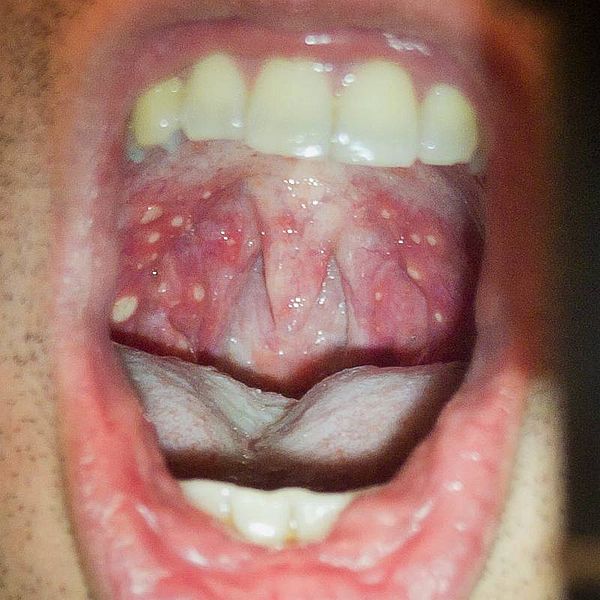Hong Kong health officials announced today they are investigating a case of severe pediatric enterovirus (EV) 71 infection as well as an outbreak of hand, foot and mouth disease (HFMD) at a secondary school in Eastern District and urged the public to be vigilant against the disease.

Public domain image/shawn c
The patient is a 13-year-old boy with good past health. He has presented with fever, sore throat, headache, neck stiffness and rash since November 7. He was taken to the Accident and Emergency Department of Pamela Youde Nethersole Eastern Hospital on November 14 and was admitted on the same day for further management.
The clinical diagnosis was meningitis and he has been in a stable condition all along. His stool specimen tested positive for EV71 upon testing by the Centre for Health Protection’s (CHP) Public Health Laboratory Services Branch. Initial investigation revealed that the patient had no recent travel history. His home contacts remain asymptomatic.
A CHP spokesman noted that there was a HFMD outbreak in the secondary school in Eastern District, which the patient attended as a form two student.
Apart from the patient, 12 form two students, comprising nine boys and three girls aged from 13 to 14, have developed fever, oral ulcers, rash and vesicles on their hands or feet since November 10. All affected pupils sought medical treatment and no hospitalisation is required. They are now in a stable condition.
Officers of the CHP have conducted a site visit and advised the staff of the school on necessary infection control and preventive measures. The school has been put under medical surveillance. Investigations are ongoing.
“EV71 is one of the causative agents for HFMD. The infection is transmitted from person to person by direct contact with nose and throat discharges, saliva, fluid from blisters, or the stool of infected persons. Good personal and environmental hygiene are the most important measures to prevent EV71 infection,” a spokesman for the CHP said.
This is the 56th laboratory confirmed EV71 case in Hong Kong in 2015 and the 6th case classified as severe.
As of 7 November 2015, a total of 736 hospital admissions of HFMD have been reported in 2015, higher than the same reporting period in 2014 (n=327).
HFMD is typically a benign and self-limiting disease. Most common in young children, it presents as fever, oral lesions and rash on the hands, feet and buttocks. The oral lesions consist of rapidly-ulcerating vesicles on the buccal mucosa, tongue, palate and gums. The rash consists of papulovesicular lesions on the palms, fingers and soles, which generally persist for seven to 10 days, and maculopapular lesions on the buttocks.
Hand, foot, and mouth disease is caused by viruses that belong to the Enterovirus genus (group). This group of viruses includes polioviruses, coxsackieviruses, echoviruses, and enteroviruses.
- Coxsackievirus A16 is the most common cause of hand, foot, and mouth disease in the United States, but other coxsackieviruses have been associated with the illness.
- Enterovirus 71 has also been associated with hand, foot, and mouth disease and outbreaks of this disease.
EV-71 has been implicated in HFMD outbreaks in Southeast Asia over the several years. EV 71 is a non-polio enterovirus.
Complications associated with HFMD caused by the more pathogenic EV-71 strain include encephalitis, aseptic meningitis, acute flaccid paralysis, pulmonary edema or hemorrhage and myocarditis. Most deaths in HFMD occur as a result of pulmonary edema or hemorrhage.
According to the US Centers for Disease Control and Prevention (CDC), there is no vaccine to protect against the viruses that cause hand, foot, and mouth disease.
A person can lower their risk of being infected by
- Washing hands often with soap and water, especially after changing diapers and using the toilet.
- Cleaning and disinfecting frequently touched surfaces and soiled items, including toys.
- Avoiding close contact such as kissing, hugging, or sharing eating utensils or cups with people with hand, foot, and mouth disease.


2 thoughts on “Severe pediatric enterovirus 71 infection investigated in Hong Kong”